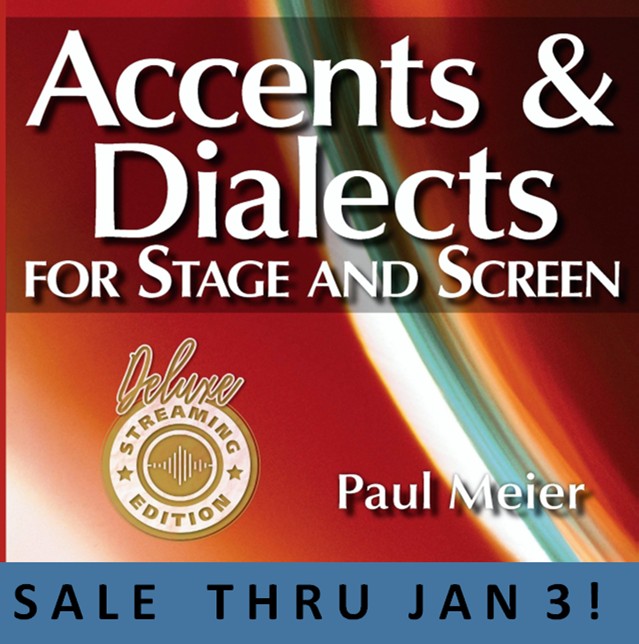Germany 2
Listen to Germany 2, a 26-year-old woman from Münster, Germany; and Brussels, Belgium. Click or tap the triangle-shaped play button to hear the subject.
Both as a courtesy and to comply with copyright law, please remember to credit IDEA for direct or indirect use of samples. IDEA is a free resource; please consider supporting us.
BIOGRAPHICAL INFORMATION
AGE: 26
DATE OF BIRTH (DD/MM/YYYY): 1973
PLACE OF BIRTH: Bonn, Germany
GENDER: female
ETHNICITY: German (exact ethnicity unknown)
OCCUPATION: teaching assistant
EDUCATION: university
AREA(S) OF RESIDENCE OUTSIDE REPRESENTATIVE REGION FOR LONGER THAN SIX MONTHS:
She was raised in Brussels, Belgium. She also spent three years in Mobile, Alabama, United States, and was residing in Lawrence, Kansas, United States, at the time of recording.
OTHER INFLUENCES ON SPEECH:
She spoke French and Flemish growing up in Brussels. Despite the listing of this sample under Germany, it could equally be categorized as a sample from Belgium.
The text used in our recordings of scripted speech can be found by clicking here.
RECORDED BY: Paul Meier
DATE OF RECORDING (DD/MM/YYYY): 1999
PHONETIC TRANSCRIPTION OF SCRIPTED SPEECH: N/A
TRANSCRIBED BY: N/A
DATE OF TRANSCRIPTION (DD/MM/YYYY): N/A
ORTHOGRAPHIC TRANSCRIPTION OF UNSCRIPTED SPEECH:
I was born in Bonn, in Germany, the same city as Beethoven, so sometimes I am joking about that; I say Beethoven and me, we’re a team, but I never really lived in Bonn; um, I moved to Brussels almost right away, and Brussels is the capital of Belgium, and I lived there for … a long time, ’til I graduated high school. And then I moved back to Germany and for the first time in my life I actually got a German ID, which was very curious to me, because … I was … according to this ID, a German citizen, but I didn’t feel like it at all. I felt more like a stranger when I lived in my country of birth than in any other country I’ve lived in. Um, I studied there for three years at the University of Münster, and I was not very happy, and so I decided to move to the United States, because that had been a childhood dream of mine, and I … ended up in Mobile, Alabama, and people always laugh about that, they say, “Well, how did you end up in Mobile, Alabama, all places in the world?” Well, it was really conscious decision. I wanted to go to the South, and I talked to some people at the academic exchange programs in Germany, and one man I talked to grew up in Atlanta, Georiga, and he recommended the University of South Alabama to me; um, that’s where I ended up. And I had three wonderful years in Mobile, made really good friends; um, almost all of them were international friends, as a matter of fact. That’s how I ended up learning Norwegian. Um, and after three years of living in Mobile, Alabama, I had completed my bachelor and my master’s degree; I decided it was time to get my doctorate. And so I looked around for some programs, and the one I liked best was in Lawrence, Kansas, and that’s how I ended up here where I’m at right now.
TRANSCRIBED BY: Faith Harvery and Erin Roberts
DATE OF TRANSCRIPTION (DD/MM/YYYY): 17/03/2008
PHONETIC TRANSCRIPTION OF UNSCRIPTED SPEECH: N/A
TRANSCRIBED BY: N/A
DATE OF TRANSCRIPTION (DD/MM/YYYY): N/A
SCHOLARLY COMMENTARY:
If you are a dialect researcher, or an actor using this sample to develop your skill in the accent, please see my instruction manual at www.paulmeier.com. As the speaker in this sample is a unique individual, it is highly unlikely that she will conform to my analysis in every detail. But you will find it interesting and instructive to notice which of my “signature sounds” and “additional features” (always suggested only as commonly heard features of the accent) are widely used by most speakers of the accent, and which are subject to variation from individual to individual.
COMMENTARY BY: Paul Meier
DATE OF COMMENTARY (DD/MM/YYYY): 10/11/2016
The archive provides:
- Recordings of accent/dialect speakers from the region you select.
- Text of the speakers’ biographical details.
- Scholarly commentary and analysis in some cases.
- In most cases, an orthographic transcription of the speakers’ unscripted speech. In a small number of cases, you will also find a narrow phonetic transcription of the sample (see Phonetic Transcriptions for a complete list). The recordings average four minutes in length and feature both the reading of one of two standard passages, and some unscripted speech. The two passages are Comma Gets a Cure (currently our standard passage) and The Rainbow Passage (used in our earliest recordings).
For instructional materials or coaching in the accents and dialects represented here, please go to Other Dialect Services.
 IDEA: International Dialects of English Archive
IDEA: International Dialects of English Archive




